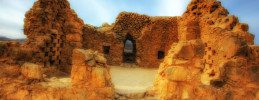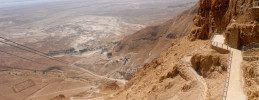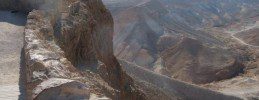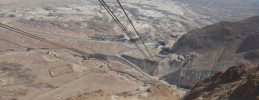Masada Mountain Ruins
January 8th 2015
 An iconic destination which combines archeological discovery, breathtaking views of natural landscapes, Temple-era history lessons and insight into the timeless spirit of the Hebrew people, Masada is one of Israel’s must-see sites. The story of this attraction begins with the building of a fortress on a mountain-top in the Judean desert by Alexander Jannaeus in the first century BCE. Herod the Great built two palaces on the mountain, as well as a casement wall.
An iconic destination which combines archeological discovery, breathtaking views of natural landscapes, Temple-era history lessons and insight into the timeless spirit of the Hebrew people, Masada is one of Israel’s must-see sites. The story of this attraction begins with the building of a fortress on a mountain-top in the Judean desert by Alexander Jannaeus in the first century BCE. Herod the Great built two palaces on the mountain, as well as a casement wall.

During the Great Revolt of the Jews against Rome, a group of Jewish rebels settled in the fort. After the destruction of the Second Temple (70 CE), the Romans continued to put down the revolt and laid siege to Masada. With the Roman army advancing, the Jews of Masada elected to commit group suicide rather than surrender.

The site remained untouched from 73 CE until the twentieth century, when excavations began. Visitors to the site can see the Western Palace, Northern Palace, the synagogue and the ritual baths. Access to Masada is either by cable car or by a strenuous hike up a trail known as the “Snake Path.” Due to the hot weather of the Dead Sea region during the day, hikes up the snake path often begin just as the sun is rising.

The new museum at Masada tells the story of the site by combining archaeological artifacts with a theatrical setting. The exhibit explores Masada’s cultural, architectural and artistic place in the Roman-Hellenistic period and relives the fateful night the suicide took place. In the evenings, an audiovisual show is presented on the western side of the mountain (accessed from Arad).

Masada’s legendary status has made it a favorite location for events such as Bar Mitzvah and Bat Mitzvah celebrations and IDF swearing-in ceremonies.











